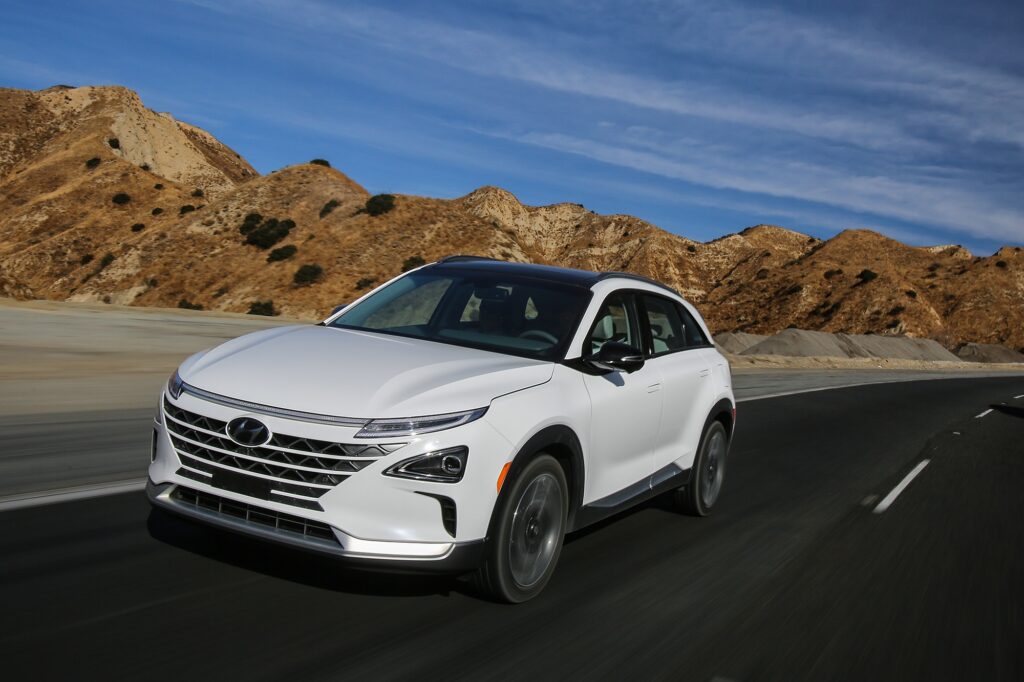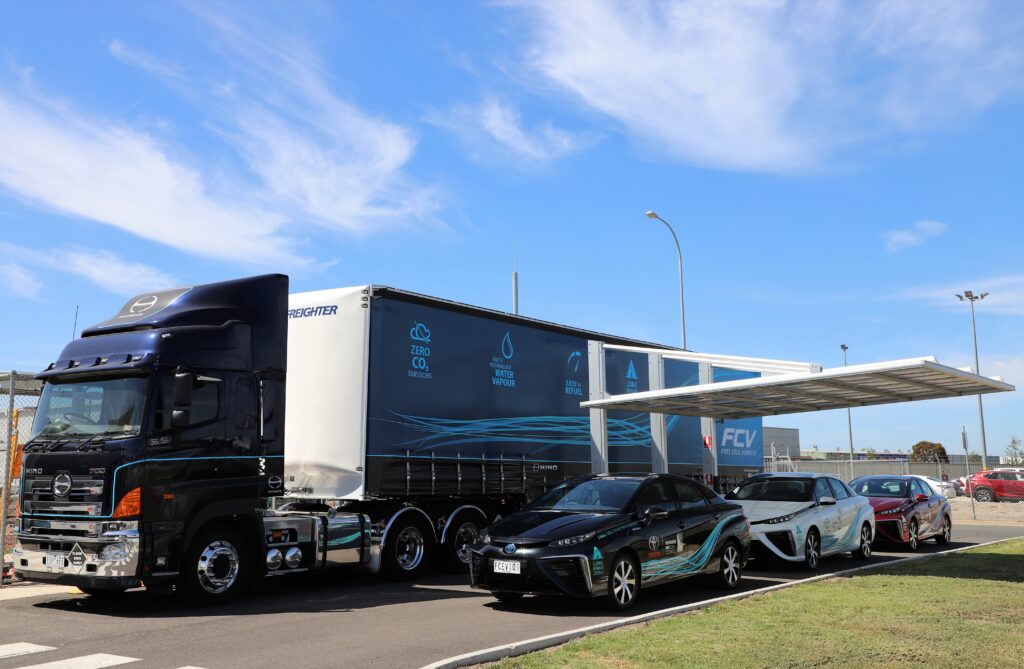Toyota and Hyundai drive ahead with their fuel cell technologies
- PostedPublished 1 December 2018
Hydrogen power has long been touted as a viable and worthwhile alternative to pure electric vehicles.
It is not, after all, without is benefits; besides offering zero local emissions, hydrogen fuel cell-equipped cars can be quickly refuelled and don’t suffer the cold-weather range issues that electric vehicles (EVs) do. Hydrogen can also be produced using renewable energy, storing any excess for later use and quelling concerns about the environmental cost of its production.
The reality, though, is that the high cost of the technology and its associated logistical issues have made it inaccessible and unfeasible for most. On the other hand, many manufacturers have persisted with the development and deployment of fuel-cell electric vehicles (FCEVs) in an effort to resolve the problems posed by the zero-emissions technology – and, ultimately, to cut global emissions.
Toyota, in particular, is among the companies committed to a hydrogen future – and it has recently partnered with Melbourne City council to test its new Mirai FCEV. The trials, in which the vehicles will be driven by council staff for three months, are designed to demonstrate the ease of use and the advantages of hydrogen power.
“We know that it’s only a matter of time before CO2 regulations arrive in Australia, and that’s why there is such a huge focus on zero emission vehicles like the Mirai,” said Toyota Australia’s manager of Advanced technology vehicles and site development, Matt MacLeod. “It’s a great opportunity to highlight the fact that these cars drive just like any other vehicles.”

Currently, however, the Mirai isn’t offered to the public in Australia due to the lack of a suitable refuelling network. This is still often touted as being one of the major issues – hydrogen is inherently difficult and expensive to transport safely and, as its automotive applications are few, there has been little incentive to develop suitable infrastructure.
As the number of hydrogen-fuelled vehicles continues to increase, more are expressing an interest in establishing a suitable hydrogen network. Hyundai’s manager of future mobility in Australia, Scott Nargar, told motoring outlet GoAuto: “We know there are projects going to happen in Queensland, we’re looking at stuff happening in New South Wales, the ACT especially, South Australia there’s some projects happening and also Western Australia.”
Hyundai, like Toyota, has significant investment in hydrogen technology. Cars aside, it is collaborating on projects including hydrogen-powered trucks that are due as early as 2019. It also has established a licensing agreement with Audi to boost the development of FCEVs.
The problem of hydrogen transportation may soon be circumvented altogether, too; regular readers will recall a report in the issue 14 of SightGlass News about new ‘reactor’ system developed by the Commonwealth Scientific and Industrial Research Organisation (CSIRO) that enables hydrogen to be shipped in the form of bulk ammonia and converted back into hydrogen at the refuelling sites.
Ammonia is far easier to handle and transport and infrastructure already exists, neatly sidestepping the issue of having to establish expensive and costly hydrogen-only transportation.
Other methods of producing hydrogen, which typically requires a considerable amount of energy, are also being proposed – further bolstering its viability as a clean fuel. Dr Moritz Kuehnel of Swansea University has suggested a method that could see plastics being used to produce hydrogen.

The process involves taking cleaned polyethylene terephthalate (PET) – commonly used for plastic bottles among other things – and mixing it with a light-absorbing material. The mix is then placed in an alkaline solution and exposed to sunlight, which causes it to react and produce hydrogen.
Besides producing hydrogen, the process helps recycle unwanted plastic and also creates chemicals that can be used to make new plastic.
Kuehnel has cautioned that the project requires considerable development to be utilised on an industrial scale, but that it does pose yet another opportunity for a potentially environmentally friendly method of producing hydrogen.
The safety of the cars themselves is also no longer a concern; the new Hyundai Nexo, for example, recently attained the maximum five-star rating in Euro NCAP crash tests, thanks in part to its abundance of advanced driver aids. It also scored an impressive 94 per cent for adult occupant safety.
For comparison, an Audi A6 achieves a similar five-star rating but a lesser 93 per cent for adult occupant protection.
Many are keen to see Australia increase its uptake of this technology, in any case, in order to capitalise on the opportunities that may exist in terms of development of hydrogen vehicles – and the production of the fuel itself, which has the potential to be a vastly profitable export industry.
- CategoriesIn SightGlass
- TagsHydrogen, hydrogen cars, hydrogen fuel cell, hydrogen trucks, SightGlass News Issue 15

